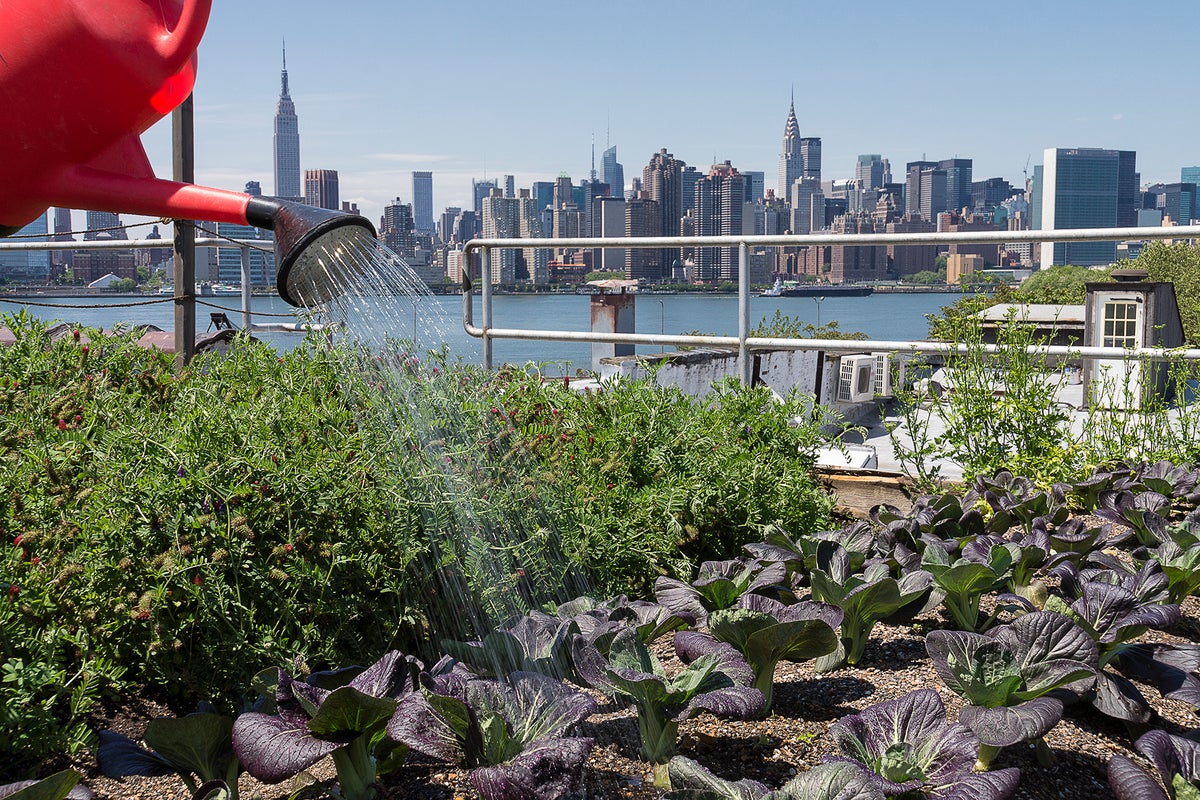The Best Strategy To Use For City Blooming
The Best Strategy To Use For City Blooming
Blog Article
City Blooming Things To Know Before You Get This
Table of Contents7 Simple Techniques For City BloomingCity Blooming for BeginnersTop Guidelines Of City BloomingThe 10-Second Trick For City BloomingCity Blooming Can Be Fun For Everyone

In reality, as you walk the roads of the Bronx, Southside Chicago or East Oakland, you might see have actually also seen big stories of ripening fruits and veggies being collected. However, just what are urban ranches and community yards? Are they different? If so, how? And more significantly, just how can you support them? Urban agriculture, metropolitan farming, or city horticulture is the method of growing, handling and distributing food in or around metropolitan areas.
Generally, city farming as a technique is a bigger investment than horticulture. There are countless much more hours invested right into the trivial matters of farming, from the crop plan to the having a tendency of your beds. This time around dedication handles an entire brand-new definition once you understand the objective that is being functioned in the direction of and devoted, specifically that of getting a plentiful return of crops to be taken in.
A community garden is a solitary tract gardened collectively by a group of individuals. Area gardens utilize either private or common stories on personal or public land while creating fruit, veggies, and/or plants grown for their attractive look. The fundamental design here is that a large group of people each contribute a reasonably tiny amount of time to working their own plot, and get the fruits of their labor as a result.
The Best Guide To City Blooming

There are neighborhood gardens, a lot of whom Small Axe Peppers has partnered with, that deal aid to refugees, low-income households, children teams, and neighborhood organizations by assisting them establish and grow their very own gardens. The differences in between neighborhood yard and city ranch are nuanced, though ultimately the very same standard task takes placefood plant farming yet within various organizational structures.
Urban ranches are generally a lot more service and technology oriented, with the key purpose of optimizing yields and offering fruit and vegetables. Commercial metropolitan ranches are commonly targeted at broadening manufacturing on normally little acreage with technologies in innovations such as aquaculture, hydroponics, and greenhouses and may companion with an industrial cooking area to produce locally-produced value-added items such as jams and sauces.
Some Known Questions About City Blooming.
The fruit and vegetables is usually expanded on a much smaller range and is taken home to eat at home or to share. By supplying much needed eco-friendly spaces in destitute, concrete metropolitan areas, they enable the advantages of yard gardening to those lacking yards, and function as outstanding instances of self-organization and neighborhood activism.
Some neighborhood yards, typically in metropolitan areas, relocate into expanding for industrial use while some city farms open up their land for even more socially mindful advantages. No matter of how you specify and distinguish the two, they are both positive forces for good in cities around America and the world.
As every one of Small Axe Peppers' warm sauces are sourced with peppers from neighborhood gardens, your purchases straight aid fund these local jobs (https://businesslistingplus.com/profile/cityblooming/). Take part in the transformation by.
A friend of mine lately commented in a discussion concerning horticulture that "It's fascinating, I've constantly thought that farming as a method is somewhat like gardening. As I spent even more and more time in my Urban Farming class I have actually come to recognize that to say that horticulture is a miniature extension of farming would be a bit of stretch.
Some Known Factual Statements About City Blooming
They both focus on the care of plants for some goal that can be nutrition, profit or just the pleasure of the craft. They both call for a try here financial financial investment on top of a time financial investment, something that a great deal of people in our rapid paced life do not have a lot of.
We can see that the similarities are abundant, yet are the distinctions sufficient to produce a distinction? As a student at NYU I have the possibility to work with the leave It Much better Foundation, a group that teaches fundamental nourishment and gardening to senior high school trainees. https://www.slideshare.net/danielnold94107. This experience offered me an in-depth venture right into the globe of amateur gardening beyond what most individuals have actually been in contact with
Farming as a technique is a bigger financial investment than horticulture. There are many extra hours invested into the trivial matters of farming, from the plant plan to the tending of your beds.
The typical garden enthusiast tackles his obligations as a chore instead of a need and therefore distinguishes his or herself from the farmer. However with this distinction in hand, they are both calming and stress-free workouts that any individual can get, which on its own ought to be a promotion for both.
Little Known Questions About City Blooming.
Something went incorrect - indoor plants. Wait a minute and try again Try once more
Report this page